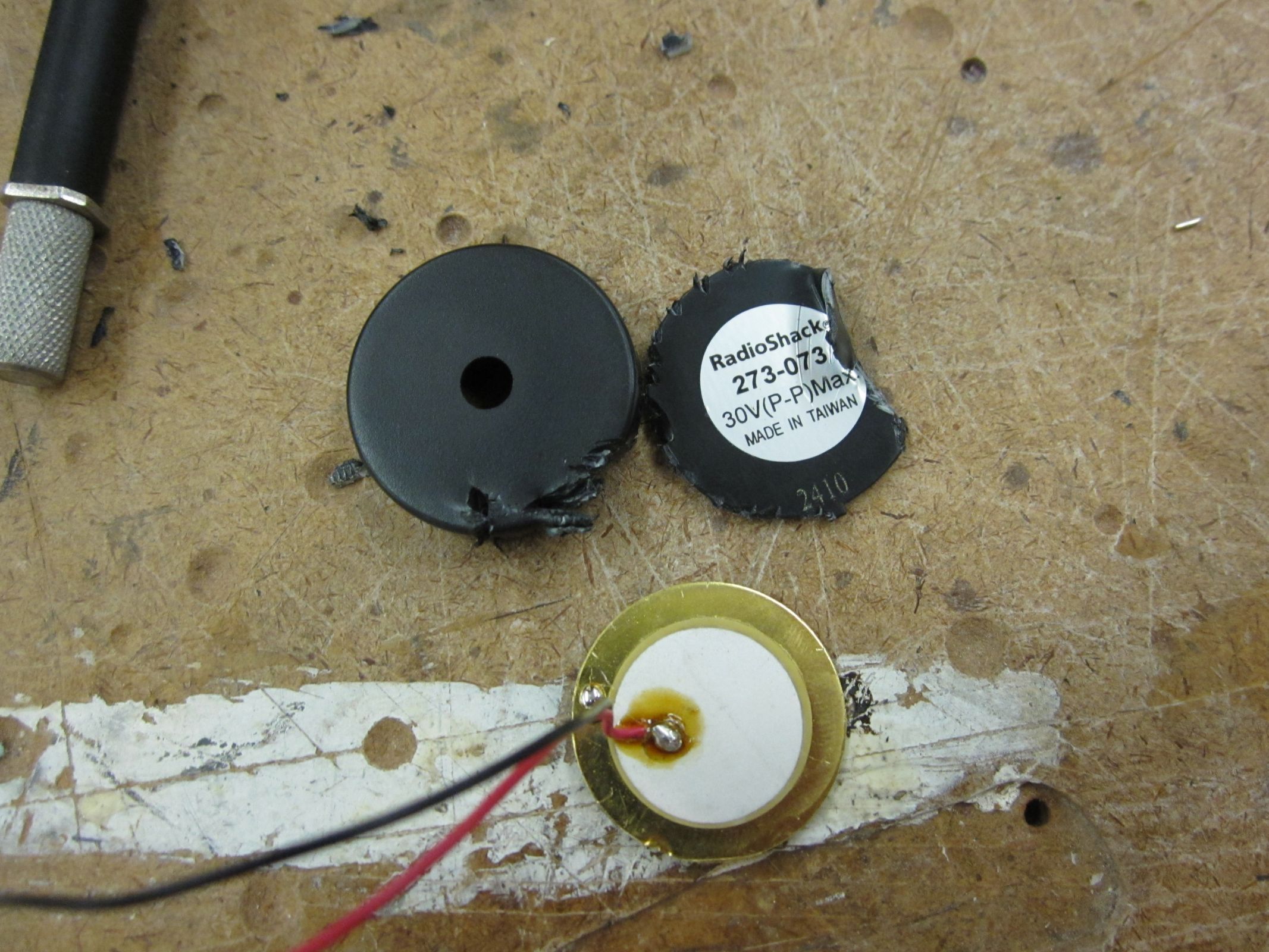Make a contact mic
Build a simple contact microphone using a piezo disc, wires, and tape to explore sound vibrations and record nearby instrument and object noises.



Step-by-step guide to make a contact mic
DIY Piezo Contact Microphone - Build Your Own Acoustic Guitar Pickup (Easy Tutorial)
Step 1
Gather all the Materials Needed and put them on a clean table.
Step 2
Use the scissors to cut each insulated wire to about 10–15 centimetres long.
Step 3
Strip about 5 millimetres of insulation off one end of each wire so the copper is showing.
Step 4
Look at the piezo disc and find the small metal center patch and the outer metal ring.
Step 5
Press one stripped wire end onto the piezo’s metal center patch and cover it with electrical tape so the copper stays touching.
Step 6
Press the other stripped wire end onto the piezo’s outer metal ring and cover it with electrical tape so the copper stays touching.
Step 7
Put the taped piezo into the small plastic bottle cap or on the thin cardboard and tape it down so the piezo sits flat and the taped side faces outward.
Step 8
Turn on your recorder or amplifier and set the volume low before connecting or using the contact mic.
Step 9
Press the bottle cap sensor firmly against the instrument or object you want to hear so the piezo touches the surface.
Step 10
Record a short audio sample while you tap or play the object so you can hear the vibrations the piezo picks up.
Step 11
Try the sensor on different surfaces and move it around to find the clearest and most interesting sounds.
Step 12
Share a photo or short video of your contact mic and the sounds you recorded on DIY.org
Final steps
You're almost there! Complete all the steps, bring your creation to life, post it, and conquer the challenge!


Help!?
What can we use if we can't find a piezo disc or small plastic bottle cap?
If a piezo disc or bottle cap is hard to find, salvage a piezo from a cheap buzzer or piezo speaker and use a flat piece of thin cardboard or a small plastic lid from a food container in place of the bottle cap while following the same wiring and taping steps.
Why do I get little or no sound when I tap the object with the sensor, and how can I fix it?
If you hear little sound, check that about 5 millimetres of insulation is stripped so the copper wire end is actually touching the piezo's metal center patch and outer ring, re-tape those contacts firmly with electrical tape, ensure the taped piezo sits flat in the bottle cap or on the cardboard, and slowly raise the amplifier or recorder volume from low.
How can I adapt this activity for younger children or make it more challenging for older kids?
For younger children have an adult pre-cut and strip the 10–15 centimetre wires and help press and tape the wires onto the piezo, while older kids can solder the wires to the piezo, add a 3.5 mm plug to connect to a recorder, or experiment with different enclosure materials.
What are simple ways to extend or personalize our contact mic project after the basic recording?
To extend the project, try mounting the taped piezo in different resonant boxes (shoe box, wooden box), combine two piezos for stereo or layered recordings, decorate the bottle cap or cardboard, and record the sounds from the varied surfaces you test to compare textures.
Watch videos on how to make a contact mic
DIY Contact Mic - Collin's Lab
Facts about sound and vibration
⚡ The piezoelectric effect creates voltage from pressure — mechanical vibrations become tiny electric signals.
🔊 A contact mic picks up vibrations through solids, so you can ‘hear’ a table, drumhead, or violin body.
🎸 Musicians often use contact mics to amplify acoustic instruments without a traditional microphone in front.
🎧 Piezo discs can act as tiny speakers or microphones — flip one from buzzer to contact mic!
🧪 Piezo sensors show up everywhere — in lighters, medical ultrasound gear, and even some spacecraft instruments.
How do you build a simple contact microphone with a piezo disc?
What materials are needed to make a child-friendly contact mic?
What ages is the contact mic activity suitable for?
What safety tips and fun variations can we try with a contact mic?


One subscription, many ways to play and learn.
Only $6.99 after trial. No credit card required



